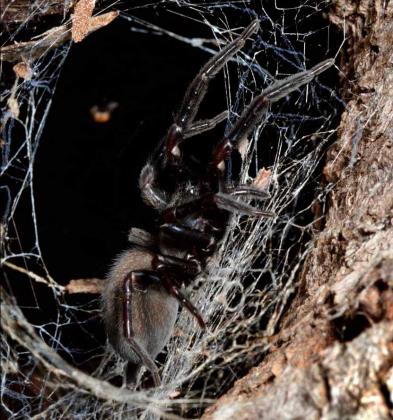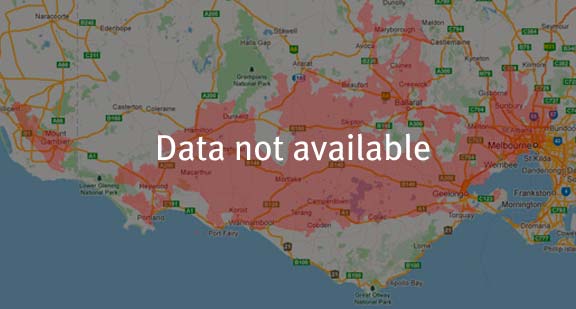A range of teacher professional learning programs will be developed to accompany the Biodiversity of the Western Volcanic Plains online outreach...

Black House Spider
Badumna insignis
The female spider stays in her web, never leaving it and always repairing it (so old webs can look grey and woolly due to the added silk). Several white silk egg sacs are held within her web for protection. When the spiderlings hatch they disperse. The spiders mature during summer and live for about two years.
| Details | Description |
| Type | Invertebrate |
| Group | Arachnid - Spider |
| Other Common Names | Window Spider |
| Identifying Characteristics | |
| Distinctive Markings | The webs of Black House Spiders are lacy silk sheets with 'funnel-like' entrances, often located in a crevice (not in the ground). |
| Diet | Carnivore. Invertebrates such as flies, beetles, butterflies, bees and ants. They are eaten by birds, the White-tailed Spider, parasitic wasps and flies. |
| Habitat | Tree trunks (especially rough barked), logs, rock walls and buildings (e.g. in window frames, wall crevices). |
| Native Status | Native to Australia |
| Bites/Sting | Black House Spiders are timid and do not often bite humans. The bite however may be quite painful and cause local swelling. Occasionally symptoms include nausea, vomiting, sweating and giddiness may occur. |
| Taxonomy | |
| Phylum | Arthropoda |
| Class | Arachnida |
| Order | Araneae |
| Family | Desidae |
| Genus | Badumna |
| Species | insignis |

Distribution maps indicate current and historic locations where species have been sighted.
Source: Atlas of Living Australia
| Conservation Status | |
| DEPI Advisory List | Not listed |
| FFG Act | Not listed |
| EPBC Act | Not listed |
The conservation status of species is listed within Victoria and Australia.
The Department of Environment and Primary Industry (DEPI) Advisory List consists of non-statutory advisory lists of rare or threatened flora and fauna within Victoria.
The Flora and Fauna Guarantee Act 1988 (FFG Act) lists threatened species in Victoria. Under the Act, an Action Statement is produced for each listed species.
The Environment Protection and Biodiversity Conservation Act 1999 (EPBC Act) is the Australian Government’s key piece of environmental legislation, listing nationally threatened native species and ecological communities.



